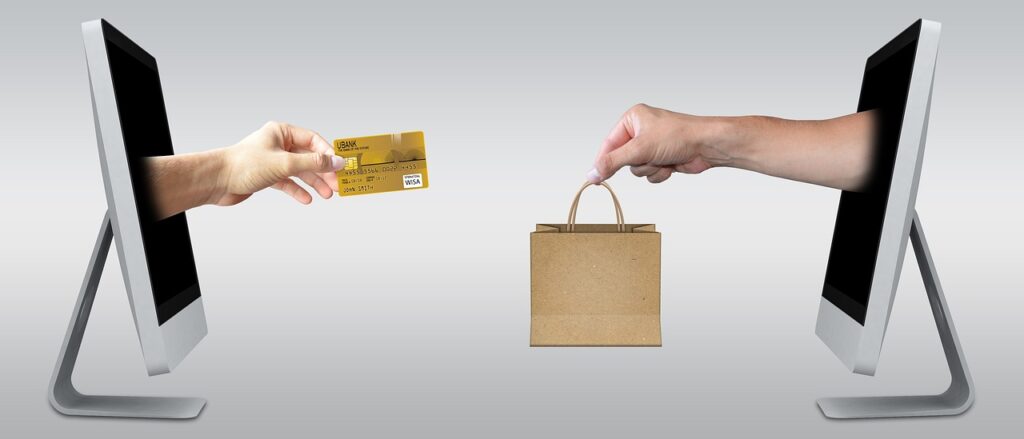In the fast-paced world of innovation and intellectual property, patent valuation is a critical element that can make or break businesses and inventors. The value assigned to a patent is not a mere number; it represents the culmination of various intricate factors that influence its worth. In this extensive and comprehensive article, we will embark on a detailed exploration of the multifaceted world of patent valuation. Each aspect will be carefully examined and explained in-depth, ensuring that you gain a profound understanding of the complex process involved.
The Essence of Patent Valuation
To truly grasp patent valuation, we must start by understanding its essence.
Patent valuation is the practice of determining the financial worth of a granted patent, which serves as a legal protection for an inventor’s innovative creation. It involves a thorough assessment of the patent’s intrinsic value, considering its uniqueness, real-world applicability, and legal protection. This evaluation process helps stakeholders gauge the economic potential and market relevance of the patented technology.

In essence, patent valuation provides a monetary perspective on the intellectual property asset, helping inventors, businesses, and investors make informed decisions regarding licensing, sales, strategic planning, and financial transactions. The value attributed to a patent reflects its potential to generate revenue, secure market exclusivity, and contribute to a company’s overall innovation and competitive advantage.
A patent’s value is derived from a combination of its uniqueness, real-world applications, legal protection, economic and industry trends, competitive landscape, licensing potential, technical and market due diligence, and geographical considerations. Each of these factors contributes to the overall value of a patent, and we will delve into each one comprehensively.
Uniqueness and Innovation
At the heart of patent valuation lies the essence of uniqueness and innovation. These qualities are the pillars upon which the entire value of a patent rests. In the realm of intellectual property, a patent is not merely a legal document but a testament to human ingenuity. The more groundbreaking and novel an invention is, the higher its potential valuation. This is because innovation is a driving force behind progress, and patents that embody unique and novel solutions are highly sought after.
To fully comprehend the importance of innovation in patent valuation, one must recognize that patents exist to encourage and protect inventors who push the boundaries of knowledge and creativity. A patent must offer something entirely new and distinctive in comparison to existing solutions. Uniqueness is the bedrock upon which the value of patents is established. When a patent introduces an entirely fresh approach or a novel technology that disrupts the status quo, it becomes a precious asset, capturing the essence of human advancement and securing a place of significance in the world of intellectual property. The more a patent represents a genuine leap forward, the greater its potential to contribute to industry, society, and the inventors themselves, both in terms of recognition and financial reward.
Market Demand and Application
While uniqueness and innovation are crucial factors, a patent’s value cannot be fully appreciated without considering the real-world demand and application of the patented technology. In essence, the patent’s worth is intricately tied to its relevance and utility in the market. The more a patented invention addresses a pressing need in the market and has a wide range of potential applications, the more likely its valuation is to soar.
To assess this, we must navigate the intricate dynamics of the market. We delve into understanding the specific target industries that the patented technology can serve. Some patents may have broad applications across multiple sectors, while others may have a more specialized focus. The scalability of the technology is another vital consideration. A patent with the potential for widespread use or adaptability across various industries is inherently more valuable.
The direct impact of market demand and application on patent valuation is significant. When a patent aligns with market needs and demonstrates the potential to address these needs effectively, its valuation reflects this alignment. In essence, real-world application and demand serve as the lifeblood of any patent’s value. A patent’s true worth is not solely an abstract concept but is intricately tied to its capacity to bring about meaningful change, solve real-world problems, and drive innovation within industry and society.
Legal Protection
In the world of patent valuation, robust legal protection is a fundamental factor that cannot be overstated. Legal protection is the shield that guards a patent from infringement and unauthorized use, and it plays a pivotal role in determining its value. Patents, by their nature, grant inventors exclusive rights to their creations for a set period. Understanding the intricacies of this protection is essential for gauging a patent’s value accurately.
Various forms of intellectual property protection exist, including utility patents, design patents, and trade secrets. The type of patent a technology holds can significantly affect its valuation. For instance, utility patents protect functional and innovative processes or products, while design patents focus on the ornamental and aesthetic aspects of a product. Trade secrets, on the other hand, rely on confidentiality and are not disclosed to the public but are protected through legal agreements.
The extent and strength of legal protection influence the market exclusivity that a patent offers. Strong patent protection ensures that competitors cannot easily replicate or use the technology without authorization. This exclusivity, in turn, contributes to the patent’s valuation. Without adequate protection, a patent’s worth can diminish significantly, as it may be vulnerable to infringement or copying, which could erode its market value and competitive advantage.

Economic and Industry Trends
The economic and industry trends at the time of patent valuation are integral components that have a profound impact on a patent’s value. The economic landscape is in a constant state of flux, with industries evolving, emerging, and adapting to market dynamics. A patent’s value is closely entwined with these fluctuations, making it imperative to consider economic conditions and industry trends.
Economic conditions, such as the state of the global economy, inflation rates, and interest rates, can affect the value of a patent. In periods of economic growth and stability, patents that promise cost savings, efficiency improvements, or new revenue streams may be particularly valuable. Conversely, during economic downturns, patents that offer solutions for cost reduction and increased competitiveness can gain importance.
Emerging industries, those on the cusp of rapid growth and innovation, often offer lucrative opportunities for patent holders. Patents that align with current industry trends and anticipate future shifts are more likely to be valued higher. Understanding market trends and forecasting future economic developments is essential for assessing the relevance and potential for commercial success of a patent. Consequently, patents that exhibit alignment with these trends are often more attractive to potential buyers, licensees, and investors.
Competing Technologies
In a dynamic and ever-evolving environment, where innovation is ceaseless, the presence of competing technologies is a factor that significantly impacts patent valuation. The landscape of technological progress is marked by constant advancements and the emergence of alternative solutions or rival patents in the same domain. This scenario creates both challenges and opportunities for patent holders.
When assessing the value of a patent, it is vital to consider the competitive landscape in the relevant industry. Competitive technologies may offer similar or alternative solutions to the same problems that the patent addresses. The presence of these alternatives can affect a patent’s value in various ways.
Competing technologies can pose a challenge by creating market competition, potentially reducing the exclusivity and market share of the patented technology. This can impact the potential for revenue generation and market dominance, which can, in turn, influence the patent’s value. However, competition can also signify market demand and validation for a particular technology, which may increase its value if it stands out as a superior or innovative solution.
Understanding how to navigate the competitive landscape is essential for positioning a patent for maximum value. In some cases, it may involve strategic partnerships, licensing agreements, or further innovation to maintain a competitive edge. In this context, competition is not just a threat but also an opportunity to demonstrate the uniqueness and advantages of the patented technology, ultimately influencing its valuation.
Real World Examples of Patent Valuation
Patent valuation in the real world can be seen through various examples, showcasing how patents are assessed and their value determined for different purposes. Here are a few examples:
Technology Licensing
When a company holds a portfolio of patents related to a specific technology, it can license those patents to other companies in exchange for royalties. For example, a pharmaceutical company with valuable drug patents may license them to generic drug manufacturers. The value of these patents is assessed based on factors like the drugs’ market potential, exclusivity, and revenue from licensing agreements.
Mergers and Acquisitions
In the context of mergers and acquisitions (M&A), the value of a target company’s patents is a critical consideration. For instance, when Google acquired Motorola Mobility, a significant part of the deal’s value was attributed to Motorola’s patent portfolio. The valuation of these patents played a crucial role in determining the purchase price.
Litigation and Legal Disputes
Patents are often at the center of legal disputes, and their valuation is crucial in such cases. Apple’s legal battles with Samsung over smartphone patents are a well-known example. The value of the disputed patents was essential in calculating potential damages and royalties.
Startup Valuation
Startups often rely on their intellectual property, including patents, as a significant part of their valuation. Investors assess the startup’s patents to determine their uniqueness and market potential. If a startup holds a patent for a groundbreaking technology, it can significantly increase its valuation when seeking investment.
Royalty Negotiations
When companies enter into licensing agreements, they need to determine the appropriate royalty rates for using patented technology. The value of the patent plays a central role in these negotiations. For instance, when Qualcomm licenses its mobile technology patents to smartphone manufacturers, the royalty rates are determined based on the value of the patented technology and its contribution to the devices.
Conclusion
In conclusion, patent valuation is a complex and multifaceted process that hinges on numerous interrelated factors. The worth of a patent is not solely determined by its technical specifications but also by its real-world applicability, legal protection, and economic relevance. Successful patent valuation requires a comprehensive understanding of these factors and the ability to adapt to ever-changing market dynamics.

Navigating the intricate world of patent valuation is a journey that demands a deep understanding of innovation, market dynamics, legal frameworks, and business acumen. By carefully considering the factors outlined in this article, patent holders and inventors can make informed decisions that maximize the value of their intellectual property in a rapidly evolving landscape. Remember, the value of a patent is not just a number; it’s a reflection of its potential to shape industries and change the world.

Leave a Reply